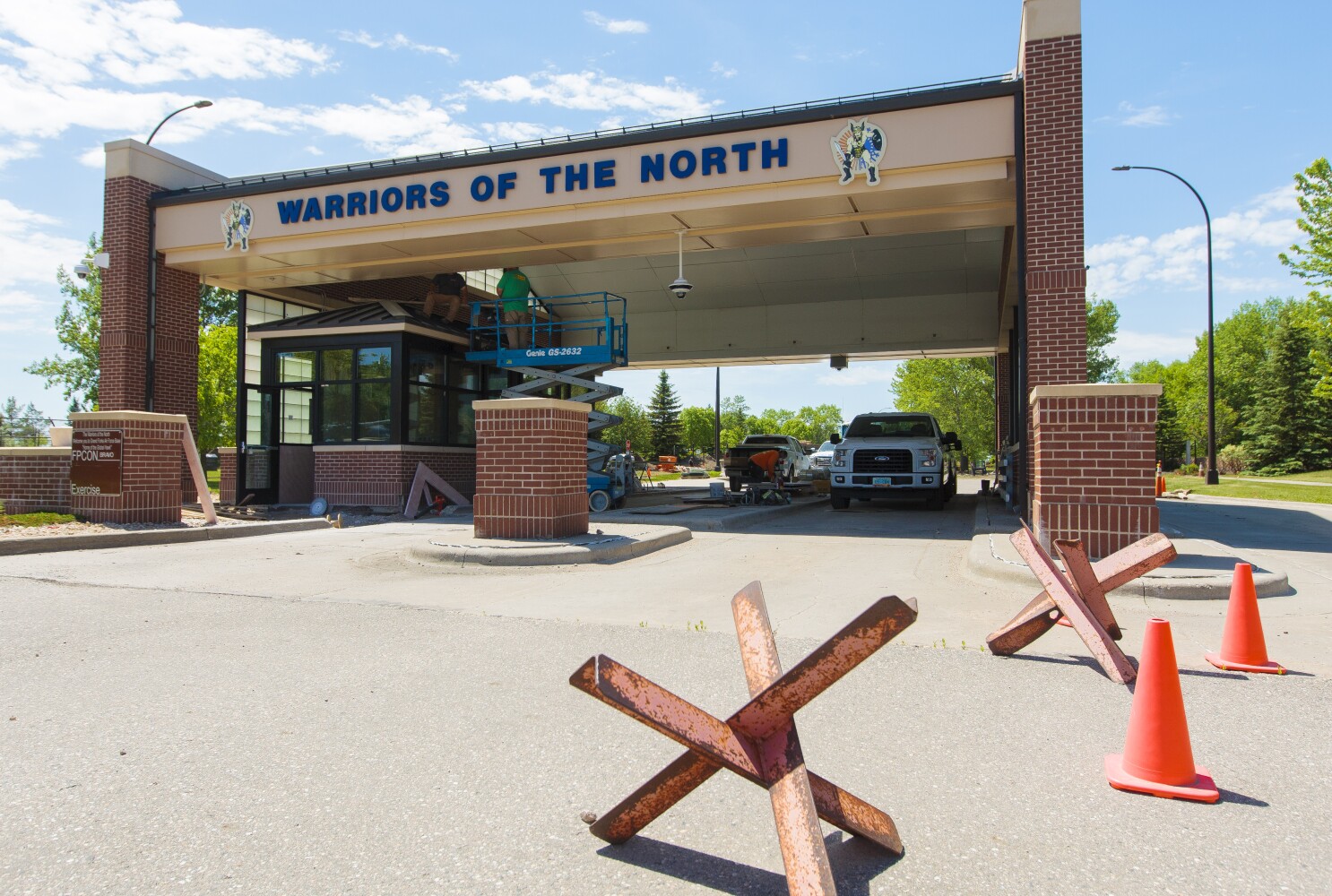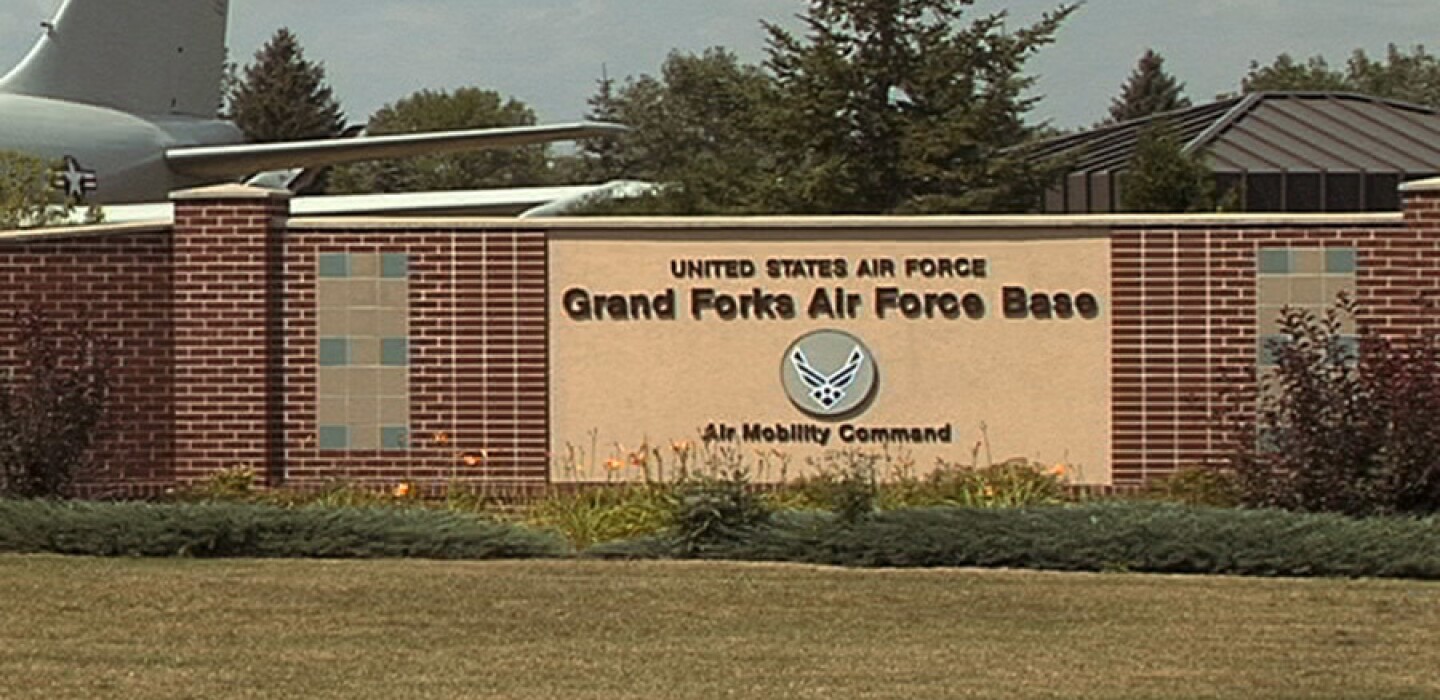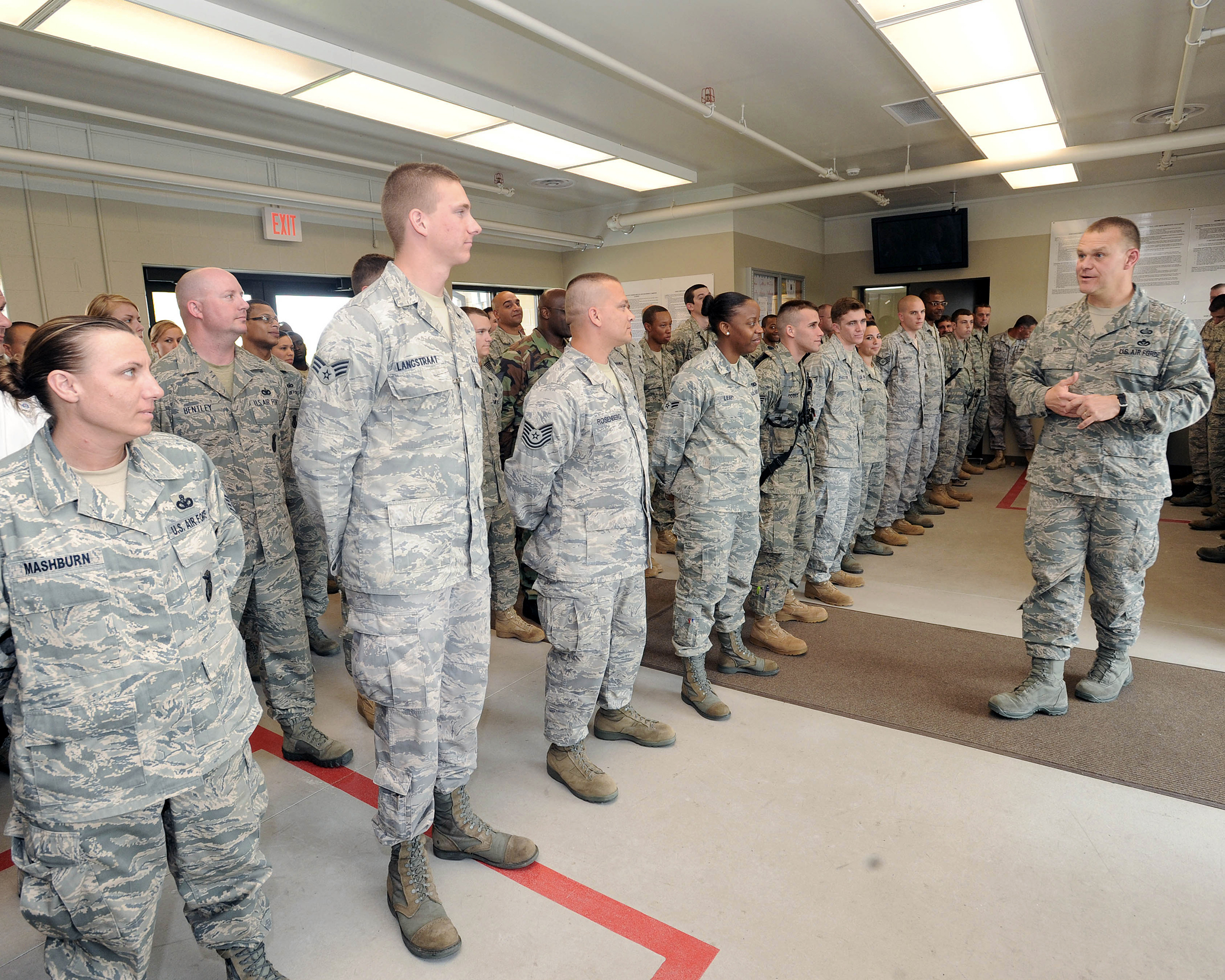Grand Forks Afb Nd - 47°57′50″N 097°24′04″W / 47.96389°N 97.40111°W / 47.96389; -97.40111 Coordinates: 47°57′50″N 097°24′04″W / 47.96389°N 97.40111°W / 47.96389; -97.40111
Grand Forks Air Force Base (AFB) (IATA: RDR, ICAO: KRDR, FAA LID: RDR) is a United States Air Force installation in northeastern North Dakota, located north of Emerado and 16 miles (26 km) west of Grand Forks. .
Grand Forks Afb Nd

The host unit is the 319th Reconnaissance Wing (319 RW) assigned to the Air Combat Command (ACC) which operates the long-range E/RQ-4B Global Hawk (RPA) aircraft, for intelligence, surveillance and reconnaissance (ISR). During the Cold War, GFAFB was a major installation of the Strategic Air Command (SAC), with B-52 bombers, KC-135 tankers, and Minuteman intercontinental ballistic missiles.
The Best Neighborhoods In Grand Forks Afb, Nd By Home Value
Grand Forks Air Force Base was established on 1 December 1955, and construction began in the fall of that year. It was commissioned on January 28, 1957, and named after the nearby city of Grand Forks.
Due to the continuation of the Cold War between the United States and the Soviet Union, GFAFB was originally an Air Defense Center (ADC). The site was chosen in 1954 and the land was donated by the residents of Grand Forks, the site is 15 miles (24 km) west of the city. The 5,400-acre (22 km
On 18 February 1957, the 478th Fighter Group (Defse) was activated at Grand Forks. The 18th Fighter-Interceptor Squadron was relocated from Wurtsmith AFB, Michigan on 1 May 1960, and flew the Foodoo F-101B until 15 April 1971, when it became inactive and the Voodoos were retired. It was replaced by the 460 FIS, which was moved from Kingley Field in Klamath Falls, Oregon. The 460th FIS flew F-106 Delta Darts until it too was withdrawn from the air on 15 July 1974.
In addition to the intercept groups, a Semi Automatic Ground Cter Data Vironmt (SAGE) (DC-11) was developed at Grand Forks in 1958. The SAGE system was a network linking Air Force (and later FAA) radar stations - maintain a ctralized Geral cter for Air Defse, designed to provide early warning and response to a Soviet nuclear attack. The DC-11 was operated by the Grand Forks Air Defense Department (GFADS), activated on 8 December 1957 under the 31st Airlift Wing at Snelling AFS, Minnesota. On 1 January 1959, GFADS was transferred to the operational control of the 29th Airborne Division at Malmstrom AFB in Great Falls, Montana.
U.s Air Force Ranks Grand Forks Community Well, But There Is Room For Improvement
SAGE operations were extensive and GFADS was activated on 1 December 1963, adding the Minot Air Defense Department at Minot AFB to the west. With the launch of the DC-11, Grand Forks AFB was transferred from the Air Defense mission to the Strategic Air Command (SAC).
In 1971, the 18th Fighter-Interceptor Squadron was disbanded and the unit replaced by the 460th Fighter-Interceptor Squadron. Although the GGD 460 won first place in the air-to-air competition at William Tell at Tyndall AFB, Florida, it was grounded in 1974 due to a redesign of the air defense system, and operations of the ADCOM Grand Prix at Forks were reduced.
The SAGE DC-11 blockhouse later became the headquarters of the SAC's 321st Strategic Missile Wing. After the launch of the Minuteman III missile in 1998, the main SAGE blockhouse was demolished five years later, in June 2003.

On 3 November 1967, the Department of Defense announced that GFAFB was one of 10 initial sites to host the Stinel Anti-Ballistic Missile (ABM) site. By President Richard Nixon's proclamation on March 14, 1969, building the Grand Forks facility "Safe" became a top priority. Construction ground to a halt in mid-1969, as Congress debated the merits of the BMD. After the Sate overpowered the officers to kill the security guard, the US Army moved in assuming the allocation would come out.
Winter Record Set At Grand Forks > Air Force > Article Display
The survey teams selected sites in a wheat field near the Canada/Minnesota border, north-northwest of Grand Forks. 25 miles (40 km) separated the 113-hectare (279-acre) Perimeter Radar (PAR) and 175-hectare (433-acre) Missile Radar (MSR) sites. Four remote sites of 36 to 45 acres (15 to 18 hectares) each are to be located in a ring with a 20-mile (32 km) radius around the MSR. Groundbreaking took place on the PAR and MSR sites on April 6, 1970. Drilling proceeded rapidly, and the PAR and MSR foundation pits were in place by mid-May.
On 26 May 1972, President Nixon and Secretary of the Soviet Union Leonid Brezhnev signed the ABM Treaty, which limited each nation to one area to maintain strategic forces and one area to maintain "National Command Authority." With work 85% complete in Grand Forks, American chose to finish construction at the North Dakota site. On 21 August 1972, the Army transferred the PAR to the Security Systems Command Field Task Force (SAFSCOM). The MSR handover took place on 3 January 1973. Work on the four outlying sites lagged behind, ending on 5 November 1972. PAR testing began in the summer of 1973.
On 3 September 1974, the SAFSCOM Field Task Force was relieved by the US Army Reserve Command. It was named the Stanley R. Mickels Conservation Complex.
48°35′21″N 098°21′24″W / 48.58917°N 98.35667°W / 48.58917; -98.35667 (Stanley R. Mickelson Complex) (62.3 miles (100 km) northwest of the base), the North Dakota ABM site was completed to complete the LIM-49 Spartan and Sprint missiles during the following spring. The site was declared operational on April 1, 1975. Due to Congressional action, the Army operated at the site for less than a year. Apart from PAR, the building was abandoned in February 1976.
Grand Forks Afb Homes
In October 1977, PAR came under operational control of the USAF, operating as part of an early warning system. Designated Cavalier AFS
48°43′29″N 097°53′58″W / 48.72472°N 97.89944°W / 48.72472; -97.89944 (Cavalier AFS) (57.8 miles (93 km) north-northwest of base), still active. It is operated by the Air Force's 10th Airlift Wing (10th SWS).
On 1 September 1958, the Strategic Air Command (SAC) established the 4133d Strategic Wing at Grand Forks as part of its plan to spread its B-52 heavy bombers to a large number of bases, making it very difficult to the Soviet Union. to hit the tire team unexpectedly early. Many of these centers were close to the border between the USA and Canada; the closest to GFAFB in the north central United States were Minot and Glasgow on the west, and three in Michigan on the east (Sawyer, Kinchloe, and Wurtsmith).

The 4133d SW was redesignated the 319th Bombardmt Wing (319th BW) on 1 February 1963 with a name change only and assigned to the Second Air Force SAC, 810th Strategic Aerospace Division. After its reorganization, the wing deployed peacetime emergency response aircraft, and conducted international bomber training for Rapid Combat Control operations and aerial refueling operations to meet SAC commitments. 1960 GFAFB aircraft were the latest models: B-52H bombers and KC-135A tankers.
Grand Forks Air Force Base Set To Host Nation's First Space Networking Center
In 1973, the 319th Bomb Wing received the AGM-69 Short Attack Missile (SRAM), replacing the old CCB-28 Hound Dog air-to-surface missile on the B-52H. As operations in Southeast Asia declined, the 319th BW focused its full efforts on training personnel to fly strategic strike missions.
On 1 November 1964, the 321st Strategic Missile Wing was organized as the Minuteman II ballistic missile wing GFAFB, the first SAC.
During 1965, three wing missile groups were activated and personnel training and certification began at Vandberg AFB in southern California. In August 1965, the base received its first Minuteman II missile, shipped by train from Assembly Plant 77 at Hill AFB in Ogd, Utah. During the following March, the base received the first Minuteman II to be transported to an aircraft, an Air Force first. The Minuteman III replaced the previous one in the 1970s.
The 319th transitioned from the B-52H to the B-52G in 1983, and added the AGM-86 Air-Launched Cruise Missile (ALCM) in 1984.
Shooting At Grand Forks Air Force Base Leaves Two Dead
In December 1986, the last B-52G left GFAFB permanently, replaced by the B-1B Lancer in 1987. The tanker aircraft also changed, from the KC-135A to the KC-135R. A change in host unit occurred again in 1988, with the 42nd Airborne Division assigned to base support in place of the 321st SMW.
With the Restructuring and Disengagement of the Air Force SAC in 1992, the wing was transferred to the Air Combat Command (ACC), under Air Force Command (AFSPC) in 1993.
On 1 February 1993, ACC dropped the primary nuclear mission of the 319th Bombardment Wing and assigned the primary mission of B-1B bomber operations to the wing. The 319th British Waterways has begun planning and training to support such a mission to counter regional threats.
After the departure of the last B-1B aircraft in 1994, the base was transferred to the new Air Mobility Command (AMC) and the 319th Bomb Wing was redesignated the 319th Air Refueling Wing (319 ARW). KC-135R aircraft assets were transferred to AMC, and strategic ICBM assets to Air Force Command (AFSPC).
Grand Forks Afb
March 1995, Foundation 1995
Candlewood suites fort worth, candlewood suites fort jackson, candlewood suites fort hood tx, candlewood suites fort myers sanibel, candlewood suites fayetteville fort bragg, candlewood suites fort worth tx, candlewood suites fort benning, candlewood suites fort collins, candlewood suites fort sam houston, candlewood suites fort smith arkansas, candlewood suites fort stockton tx, candlewood suites alexandria fort belvoir

0 Comments